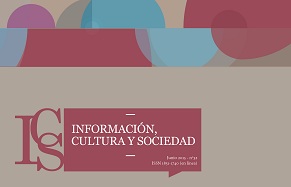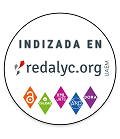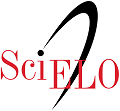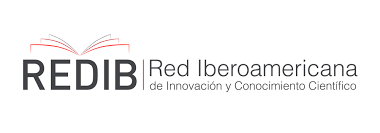The Indigenous Pictorial Codices held in the National Library of Mexico
Abstract
This work studies five manuscripts from the colonial period that are preserved in the National Library of Mexico. Firstly, it explores the concept of codex and its application in the Mesoamerican context, with the interest of locating the proposed documentary grouping criteria based on the remanence of indigenous record systems. Then comes the presentation of each of the copies that constitute the corpus, which includes a brief historical context as well as a select example of some of its graphic characteristics. Finally, the spatio-temporal location of the copies in the history of Mexican written culture is shown, and it concludes with some thoughts on the corpus addressed and the indigenous scriptural and iconographic manifestations in the colonial period. In this way, the purpose of the article is focused on presenting and describing five manuscripts as members of the corpus of Nahua codices held in the National Library of Mexico.Downloads
References
Berger, Uta. 2005. Drei mexikanische Ortsbücher. Die Techialoyan-Manuskripte Santiago Chalco Atenco (716), Azcapotzalco San Pablo Huyxoapan (717, 702, 735) und Calacohuayan Santa Maria (710). Studie, Transkription und Übersetzung mit Reproduktionen. Essen: Uta Berger.
Brown, Michelle P. 1995. Understanding Illuminated Manuscripts. A guide to technical terms. Londres: The J. Paul Getty Museum - The British Library.
Escalante Gonzalbo, Pablo. 2010. Los códices mesoamericanos antes y después de la conquista española. Historia de un lenguaje pictográfico. México: Fondo de Cultura Económica.
Galarza, Joaquín. 1990. Amatl, Amoxtli. El papel, el libro. Los códices mesoamericanos. Guía para la introducción al estudio del material pictórico indígena. México: Tava.
Hernández de León Portilla, Ascensión. 2019. Kalendario mexicano, latino y castellano. En León Portilla, Miguel, Guadalupe Curiel Defossé, y Salvador Reyes Equihuas, coords. Cantares mexicanos III. México: Universidad Nacional Autónoma de México. p. 19-98.
Hernández de León Portilla, Ascención y Liborio Villagómez. 2011. Estudio codicológico del manuscrito. En León Portilla, Miguel, ed. Cantares mexicanos. Volumen I: Estudios. México: Universidad Nacional Autónoma de México. p. 27-150.
Hill Boone, Elizabeth. 1998. Cartografía azteca: presentaciones de geografía, historia y comunidad. En Estudios de Cultura Náhuatl. Vol. 28, 17-38.
Hill Boone, Elizabeth. 2010. Relatos en rojo y negro: historias pictóricas de aztecas y mixtecos. México: Fondo de Cultura Económica.
Lacadena, Alfonso. 2008. Regional Scribal Traditions: Methodological Implications for the Decipherment of Nahuatl Writing. En The PARI Journal. Vol. 8, no. 4, 1-22.
León Portilla, Miguel. 2004. Códices. Los antiguos libros del Nuevo Mundo. México: Aguilar.
León Portilla, Miguel. 2005. Cartografía prehispánica e hispanoindígena de México. En Estudios de Cultura Náhuatl. Vol. 36, 185-197.
Molina, Alonso de. 2001 [1571]. Vocabulario en lengua castellana y mexicana y mexicana y castellana. México: Porrúa.
Moreno de los Arcos, Roberto. 1966. Guía de las obras en lenguas indígenas existentes en la Biblioteca Nacional. En Boletín de la Biblioteca Nacional de México. Vol. 17, no. 1-2, 21-117.
MS 1497 bis. s.f. México: Biblioteca Nacional de México. MS. 80 f.
MS 1628. s.f. México: Biblioteca Nacional de México. MS. 258 f.
MS 1805. s.f. México: Biblioteca Nacional de México. MS. 2 f.
MS 1809. s.f. México: Biblioteca Nacional de México. MS. 1 f.
MS 10117. s.f. México: Biblioteca Nacional de México. MS. 1 f.
Noguez, Xavier. 1999. Códice Techialoyan de San Pedro Tototepec (Estado de México). México: El Colegio Mexiquense.
Pérez Rocha, Emma y Rafael Tena. 2000. La nobleza indígena del centro de México después de la conquista. México: Instituto Nacional de Antropología e Historia.
Real Academia Española. 2022. Diccionario de la lengua española. < https://dle.rae.es/códice> [Consulta: 05 octubre 2022].
Robertson, Donald. 1975. Techialoyan Manuscripts and Paintings, with a Catalog. En Cline, Howard, ed. Handbook of Middle American Indians. Guide to Ethnohistorical Sources, vol. 14. Austin: University of Texas Press, p. 253-280.
Sahagún, Bernardino. 1577. Historia General de las cosas de la Nueva España. Segundo libro, que trata del calendario, fiestas y ceremonias, sacrificios y solemnidades que estos naturales de esta Nueva España hacía a honrra de sus dioses. <https://www.loc.gov/resource/gdcwdl.wdl_10613/?sp=2> [Consulta: 05 octubre 2022].
Tavárez, David. 1999. La idolatría letrada: un análisis comparativo de textos clandestinos rituales y devocionales en comunidades nahuas y zapotecas, 1613-1654. En Historia Mexicana. Vol. 49, no. 2, 197-252.
The Maya Society. 1935. The Azcapotzalco maguey manuscript. Baltimore: The Maya Society.
Turner, Andrew, ed. 2022. Códice Maya de México. Understanding the Oldest Surviving Book of the Americas. Los Angeles: Getty Research Institute - J. Paul Getty Museum.
Whittaker, Gordon. 2009. The Principles of Nahuatl Writing. En Göttinger Beiträge zur Sprachwissenschaft, no. 16, 47-81.
Williams, Barbara J. y Frederic Hicks. 2011. El Códice Vergara. Edición facsimilar con comentario: pintura indígena de casas, campos y organización social de Tepetlaoztoc a mediados del siglo XVI. México: Universidad Nacional Autónoma de México; Apoyo al Desarrollo de Archivos y Bibliotecas de México A.C.
Williams, Barbara J. y H. R. Harvey. 1997. The Códice de Santa María Asunción. Facsimile and Commentary: Households and Lands in Sixteenth-Century Tepetlaoztoc. Salt Lake: University of Utah Press.
Authors publishing in this journal acknowledge the conditions below:
- Authors retain the copyright of their work while they transfer the right of the first publishing to the journal, under the Creative Commons Attribution-ShareAlike 4.0 International (CC BY-SA 4.0) Licence, which allows third parties to reproduce them under the condition that express mention is given to the author and to its original publication in the journal.
- Authors may enter into other contractual and independent arrangements for the non-exclusive distribution of the version of the article published in this journal (for instance, it can be published in an institutional repository or in a book). In any case, an express mention should be given to its first publication in the journal.
- It is permitted and encouraged to publish online the articles (for example, on institutional or personal pages).


























